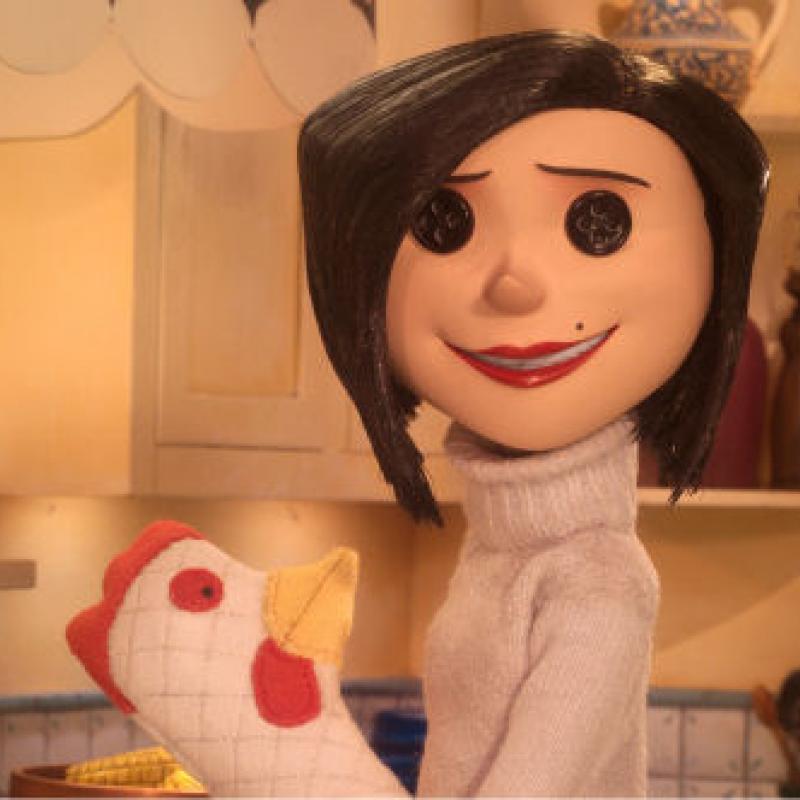In the enchanting world of Neil Gaiman's "Coraline," the character of the Other Mother stands out as one of the most intriguing and terrifying figures in modern children’s literature. This character serves as the primary antagonist, luring Coraline into a seemingly perfect alternate reality. However, beneath the surface of this idyllic world lies a darker truth that challenges the very fabric of identity and the meaning of family. The Other Mother embodies a complex mix of maternal affection and sinister manipulation, making her a compelling subject for analysis.
As we delve into the story, it becomes clear that the Other Mother is not just a villain but a representation of desires gone awry. Her character raises essential questions about the nature of parental love, the consequences of seeking perfection, and the dangers of escapism. With her button eyes and endless charm, she epitomizes the allure of an alternate life that is too good to be true. This article will explore the multifaceted persona of Coraline's Other Mother, examining her role in the narrative and what she symbolizes in the broader context of childhood fears and fantasies.
Through an exploration of Coraline's journey, we will uncover the layers of the Other Mother’s character and how she serves as a catalyst for Coraline’s growth and self-discovery. Join us as we delve into the depths of this dark fairy tale and unravel the enigma that is the Other Mother.
What is the Origin of the Other Mother?
The Other Mother, also known as the Beldam, originates from Neil Gaiman's acclaimed novella "Coraline," published in 2002. She is a shape-shifting entity that feeds on the souls of children, drawing them into her world by exploiting their desires. This character can create a parallel universe that appears to be a utopia, luring Coraline with the promise of a perfect life. However, the Other Mother’s true intentions are far more sinister than they initially seem.
How Does the Other Mother Compare to Coraline's Biological Mother?
The contrast between the Other Mother and Coraline's real mother highlights significant themes of neglect versus attention. While Coraline’s biological mother is busy and preoccupied, the Other Mother is obsessively attentive, creating an enticing yet dangerous environment. This dichotomy raises questions about parental relationships and the expectations children have of their parents.
What Role Does the Other Mother Play in Coraline's Development?
The Other Mother serves as both an obstacle and a catalyst for Coraline’s growth. Initially, Coraline is drawn to the Other Mother’s world because it offers her the attention and excitement she craves. However, as the story progresses, Coraline realizes the true cost of this false paradise. The struggles she faces against the Other Mother ultimately empower her to appreciate her real life and family. This character arc emphasizes themes of courage, resilience, and self-acceptance.
Can the Other Mother Be Seen as a Metaphor for Real-world Issues?
Indeed, the Other Mother can be interpreted as a metaphor for various real-world issues such as parental expectations, societal pressures, and the allure of fantasy. In a world where perfection is often idolized, the Other Mother embodies the dangers of chasing unrealistic aspirations. She represents the dark side of parental love, where the desire to control and mold a child can lead to manipulation and harm.
What Are the Key Traits of the Other Mother?
The Other Mother possesses several distinct traits that make her a memorable character:
- Shape-shifting Abilities: The Other Mother can alter her appearance to appear more appealing to her victims.
- Manipulative Nature: She uses psychological tactics to gain Coraline's trust and compliance.
- Maternal Affection: Despite her malevolent intentions, she exhibits a twisted form of love and care.
- Button Eyes: Her button eyes symbolize her desire to control and possess those she entices.
What Symbolism Do the Button Eyes Represent?
The button eyes of the Other Mother are one of the most striking aspects of her character design. They symbolize her desire to replace the individuality of her victims with something more uniform and controllable. The act of sewing buttons over eyes is a metaphor for the loss of identity and autonomy, a chilling reminder of the cost of succumbing to the allure of an idealized life.
How Has the Other Mother Impacted Popular Culture?
The Other Mother has left a significant mark on popular culture, becoming an iconic figure in horror and fantasy genres. Her character has inspired numerous adaptations, merchandise, and even cosplay within fan communities. The story's themes resonate with audiences of all ages, prompting discussions about the nature of childhood fears and the importance of confronting them.
What Lessons Can We Learn from Coraline's Encounter with the Other Mother?
Coraline's experience with the Other Mother teaches several valuable lessons:
- The Importance of Authentic Relationships: Genuine connections with family and friends are irreplaceable.
- The Danger of Perfectionism: Striving for an unattainable ideal can lead to destructive consequences.
- Empowerment through Adversity: Facing challenges can lead to personal growth and self-discovery.
What Makes the Other Mother a Timeless Character?
The Other Mother’s ability to resonate with audiences stems from her complexity and relatability. She embodies universal fears and desires, making her a timeless figure in literature. Her character serves as a reminder that not everything that glitters is gold and that the search for perfection can lead to unforeseen darkness.
Conclusion: The Enduring Legacy of the Other Mother
In summary, Coraline's Other Mother is a multifaceted character who symbolizes the darker aspects of parental love and the dangers of seeking an idealized life. Through her manipulation and charm, she forces Coraline to confront her own desires and ultimately learn the value of her reality. The Other Mother remains an enduring figure in literature, reminding us of the importance of authenticity, connection, and self-acceptance in a world rife with distractions and expectations.


![Coraline Other Mother [ENFJ 2w1] Funky MBTI](https://i2.wp.com/funkymbti.files.wordpress.com/2022/10/othermother.jpg)
